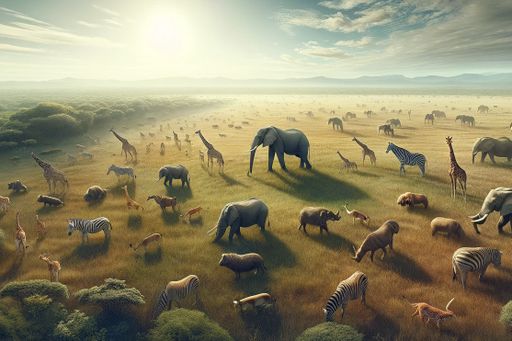Huawei's Role in Supporting Global Biodiversity
Huawei, a leading provider of consumer electronics and telecommunications products, has been assisting with wildlife conservation in China's Yellow River Delta National Nature Reserve. Leveraging 5G, cloud computing, and artificial intelligence (AI) technologies, Huawei's efforts aim to improve biodiversity research and monitoring in this crucial habitat for wetland species and migratory birds.

Huawei and Wildlife Conservation in the Yellow River Delta
Huawei, known for its consumer electronics and telecommunications products, has been taking steps to enhance biodiversity in China and beyond. They are actively involved in assisting with wildlife conservation in the Yellow River Delta National Nature Reserve in eastern China. This reserve is a crucial habitat for wetland species and migratory birds.
The Yellow River Delta region is home to around 6 million birds across 373 different species, including 26 that are classified as 'wildlife under first-class protection' in China. The area is vital for bird conservation, being part of two major avian migratory routes: the East Asian-Australasian Flyway and the West Pacific Flyway. However, increased human activity in the region poses unique challenges.
One endangered species affected by human activity is the Oriental stork, which nests on electricity towers due to a lack of tall trees in the region. This posed safety hazards to the birds and potential power disruptions for local residents. To address this, staff at the nature reserve constructed artificial nests to help the storks avoid the risk of electrocution during their migratory journeys.
Tech4All Initiative: Leveraging 5G, Cloud Computing, and AI
In 2022, Huawei launched a pilot programme in the Yellow River Delta region as part of its Tech4All digital inclusion initiative. This programme utilizes 5G, cloud computing, and artificial intelligence (AI) technologies to improve biodiversity research and monitoring in this fragile ecosystem.
The pilot programme's AI component has been trained to recognize over 47 different bird species, providing valuable data on their migration patterns and other activities. This integration of digital technology has significantly boosted efficiency for biodiversity researchers at the nature reserve. They can now observe wildlife in real-time from the comfort of their offices, reducing the need for physical observation in the wetland.
The AI-powered platform continues to expand its training to recognize a broader range of species, resulting in higher precision. The accuracy rate for well-known species and larger birds that the AI system has learned to identify has surpassed 90%. Huawei's Tech4All initiative aligns with the global focus on biodiversity conservation and climate change protection, as seen in events like the UN Framework Convention on Climate Change.
Photography and Videography for Conservation Awareness
Photography and cinematography play a vital role in spreading the conservation message. Throughout the world, individuals like Christian Moullec, a former French meteorologist and conservationist, have utilized technology to document their efforts in wildlife conservation.
Moullec noticed the increasingly dangerous migratory path of lesser white-fronted geese and embarked on a mission to create a safer route for them. He raised the birds from eggs, taught them essential life skills, and led them along a new migration route using his ultralight aircraft. In addition to establishing safer migration routes, Moullec raises awareness about habitat conservation by sharing photos and videos of his journeys.
Huawei's support for biodiversity conservation, along with the efforts of individuals like Moullec, highlights the importance of a unified approach to protect wildlife and their habitats. By leveraging technology and raising awareness, we can contribute to the preservation of our planet's biodiversity.



